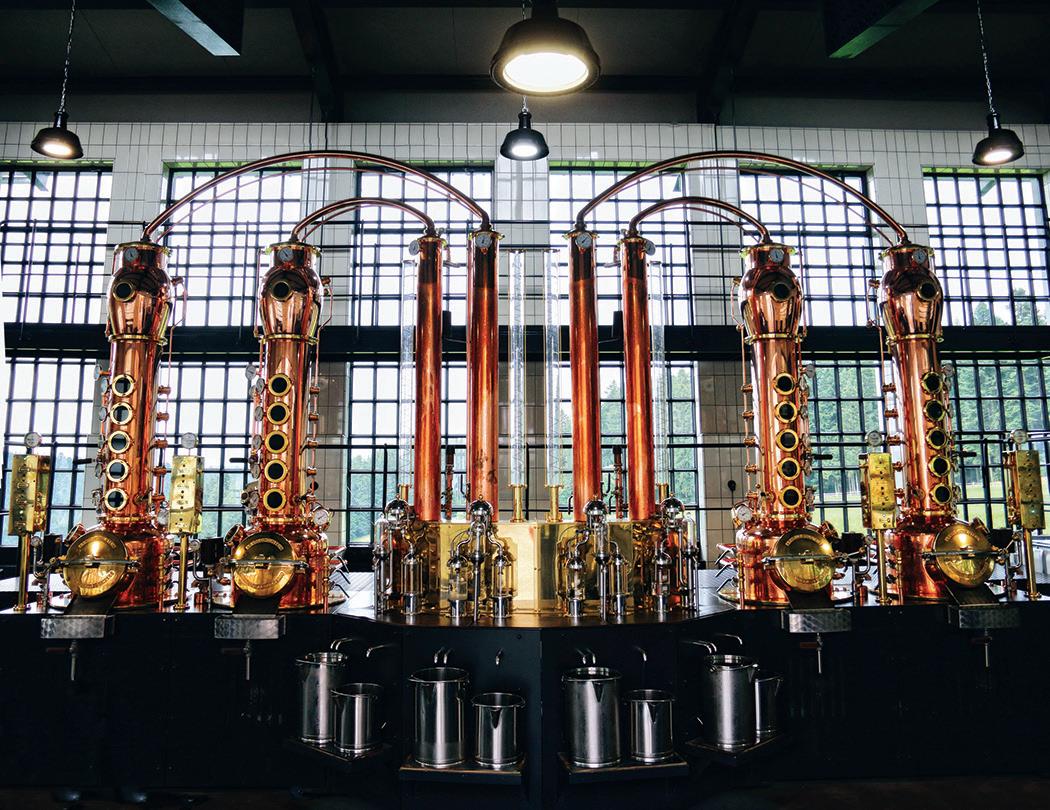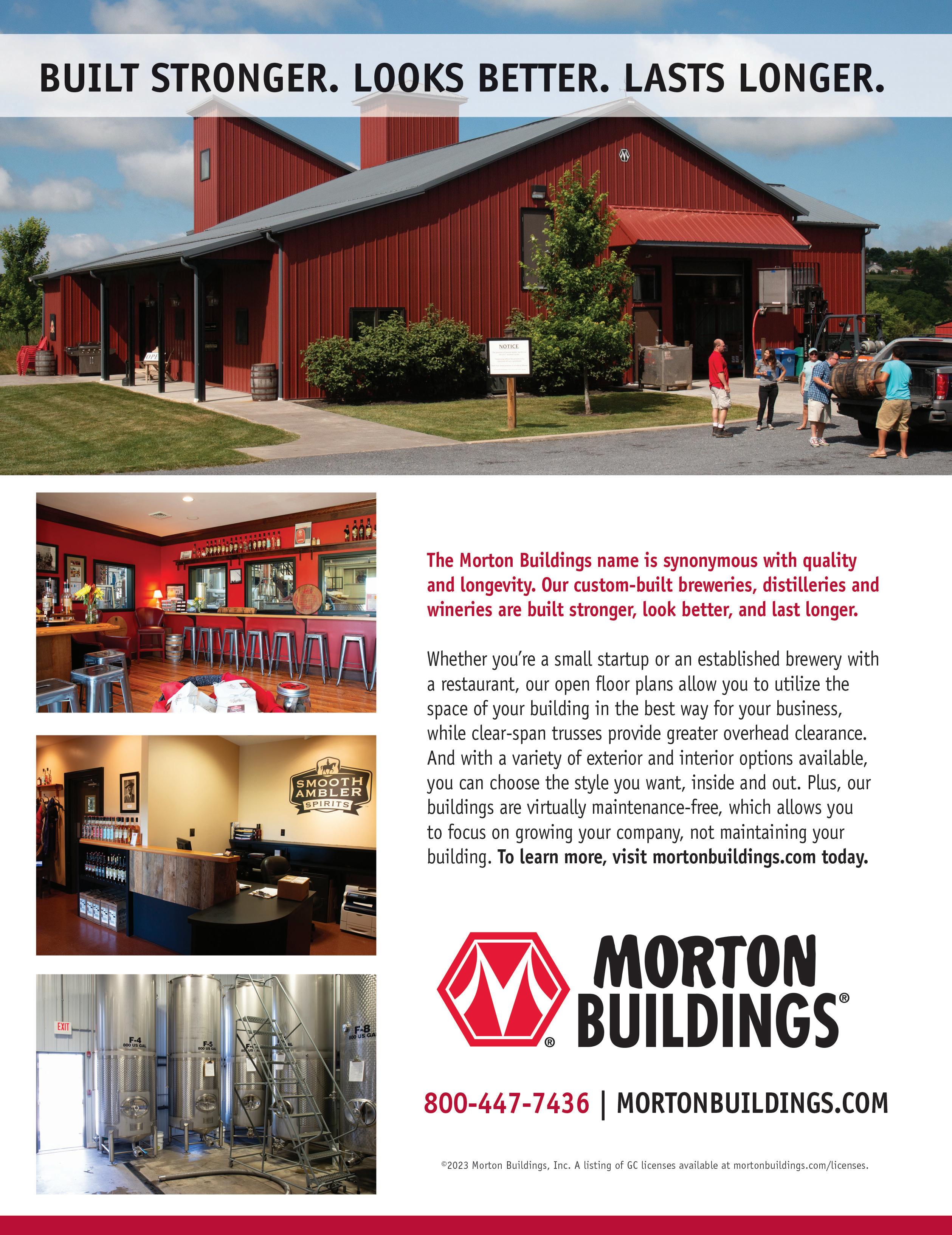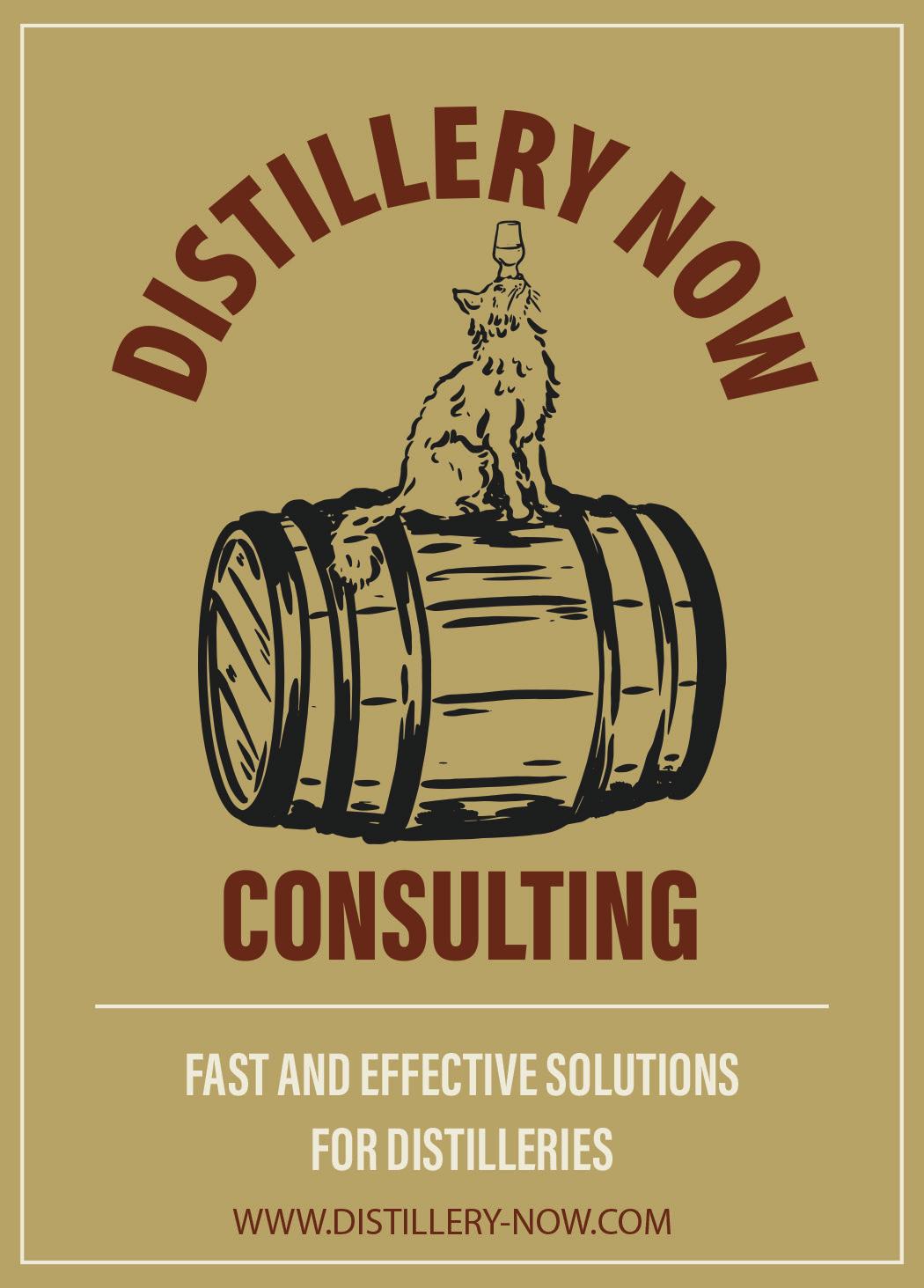
5 minute read
Go BIG or Go Home: Selecting the Right Size Still for Your Distillery
By: Kris Bohm of Distillery Now Consulting
The craft distilling movement is growing larger every day in North america. In 2003 there were approximately 60 operating distilleries in the USA. Fast forward to today and there are over 2200 active distilleries. When it comes to starting a distillery one daunting challenge every business owner faces is equipment selection. Selecting equipment is often done by forecasting demand. Without any sales history this forecast is tricky to create. Most folks go about deciding what equipment to buy based on budget and what kind of quantities of spirits are expected to be sold. If you ask almost any distillery owner if they are using the same size equipment they started on they would tell you no. Nearly every established distillery has needed to add on additional equipment or sell their existing equipment to bring in larger equipment to meet demand. Selecting the right size equipment is a critical decision, which I would like to help you make. To better inform you let's explore common equipment sizes and examples of distilleries expanding.
potential output it is essential to decide on product line up. The still used to distill rum is very different from that for vodka production. If you are planning to distill gin, you certainly do not want to use the same still for distilling whiskey. What I can tell you with certainty is that you will outgrow a homemade 50 gallon still before you even open the doors of your distillery to the public. Let's also explore the potential output of stills to compare and contrast their potential capacity.
A 100 gallon still often much less expensive than larger stills and is the size selected by some start up distilleries that are starting lean. A still of this size can only produce small quantities of distilled spirits at a commercial scale. Further a 100 gallon still requires considerable time spent in labor operating it with not very good returns for the labor. Although a 100 gallon still is going to be less expensive than bigger stills, it is likely that demand for spirits will outstrip the capacity of a still of this size quickly.
A 500 gallon still has the capacity to produce a solid amount of distilled spirits. In fact a 500 gallon pot still is one of the most common size stills you will find in new craft distilleries. A still this size has the capacity to produce 2 barrels of whiskey per day if well managed. This is plenty of whiskey for a startup distillery. Depending on your business model a 500 gallon still may provide plenty of capacity for several years. A strong successful distillery will likely outgrow the capacity of this still within 5 years.
The first question often asked by a new business in planning is how large of a still do I need?
The answer to this question will not be the same for any two people. Instead of trying to provide a definitive answer let's talk about the potential output of different size stills. To first define the
Continuous column stills are measured based on column size diameter For simplicity we will call them column stills in this paper. An 18 inch column still will process 9 gallons per minute of wash. This means on a given work day this still has the capacity to produce up to 25 full size barrels of whiskey in a single day. As you can gather, this is vastly more efficient than a pot still.
For a column still to operate it will take a sizable quantity of mash to produce this much whiskey and


Craft Distillery Craft Distillery
therein lies the largest challenge for a small distillery. To grow into running a continuous column still requires immense resources in capital and real estate compared to a column still. A distillery running a column still will need much larger, cookers, fermentors, heating and cooling capacity then is commonly utilized when operating a pot still.
For many established distilleries who are selling a decent volume of spirits the addition of another pot still may not be the best choice to increase the production of your distillery. For many whiskey producing distilleries the logical leap is to grow your production by adding a continuous column still. If the intent of your distillery is to be a regional or multistate distributed business a column still might be your best choice.
Lets Look at Two Examples of Growth in a Distillery

At Grand Canyon Distillery they launched their business in 2017 with a single 250 gallon still. With goals to produce grain to glass bourbon, single malt whiskey, vodka, rum and gin. These ambitious plans and diverse portfolio quickly stretched the limits of their production capacity very early on. Within 9 months of launching their spirits the distillery worked out a large distribution deal that landed them in nearly every liquor store and grocery store in Arizona. If the distillery was going to meet their growing demand for white spirits there would be almost no room to distill whiskey to age. With whiskey being the primary long term goal, an expansion of equipment was needed. To increase capacity Grand Canyon added additional distilling equipment far sooner than anyone expected. With the addition of a 500 gallon still to support the demand for production, the folks at Grand Canyon got back on track to be able to distill enough product to meet demand. Only 3 years after the second still was added to their equipment Grand Canyon added a 3rd still to increase capacity even further.
At Finger Lakes Distilling they launched their distillery in 2008 with a single Holstein pot still. Only 3 year after launching the distillery had outgrown their capacity to produce enough whiskey to meet demand. Finger Lakes took a big step up in production and added a 12” column still new cooker and larger fermentors to their equipment lineup. With the addition of this still Finger Lakes Distilling had increased their capacity 10 times. In the 10 years since they added this column still the distillery has consistently been able to meet demand with a much lower labor cost per proof gallon produced. In this example the addition of a column still allowed Finger Lakes to gradually increase their production without the limitations that come with a pot still.
As new distilleries move from establishing their foothold in local markets to growing state wide and beyond. A strong growth in demand will often follow this growth in territory. In many instances especially with whiskey the demand will outstrip supply and action must be taken to increase production. For anyone who has been to any of the bigger distilleries in Kentucky or Tennessee, you would have seen that every big distillery operates a continuous column still for whiskey production. A continuous column still is vastly more efficient on many levels. Continuous columns have much larger output per labor hour and use much less energy than a pot still per proof gallon produced. Stepping up from using a pot still to a continuous column still is a logical evolution and is a step that nearly every whiskey producer will make at some point when they reach a certain size.









